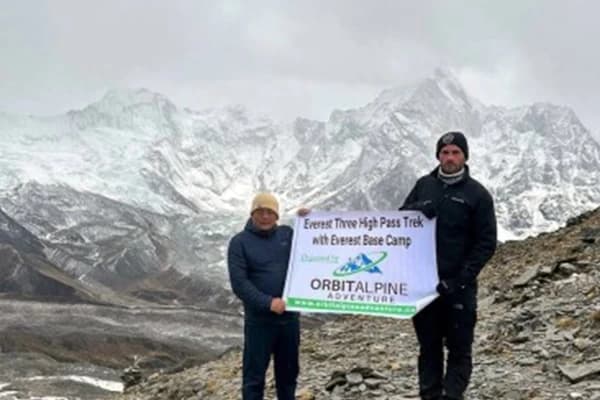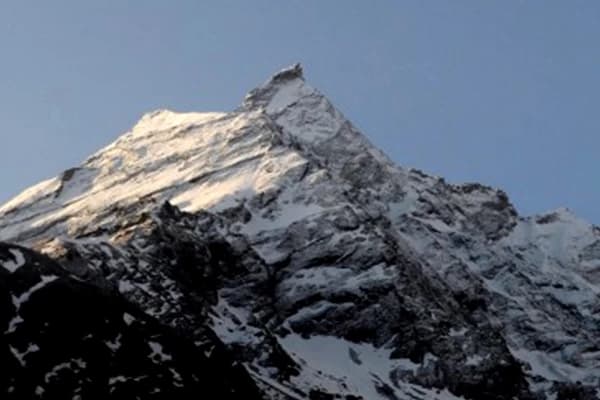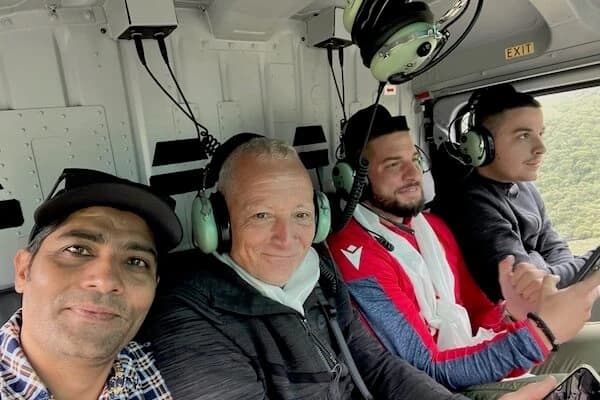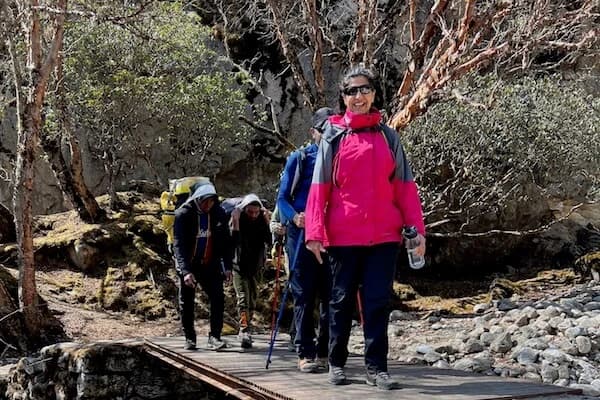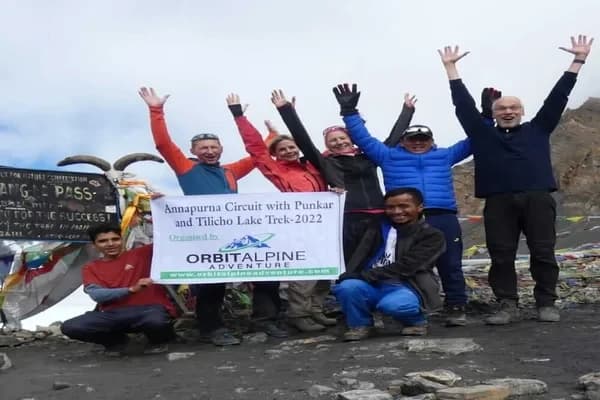
The weather in the Everest region is usually highly changeable, and tours can get canceled or delayed on account of bad conditions. Plans regarding flights are made by pilots according to real-time information mainly about the condition of the weather to confirm passenger safety. Though the occurrence of accidents is rarely seen, it occurs when there is a chance of sudden changes in the weather conditions or some technical fault. Selection of a proper operator providing suitable records of safety along with a pleasant experience is important.
Overview of Everest Base Camp Helicopter Tour
A whole tour from Kathmandu takes 3-4 hours, so, quite safely and suitably, you can get a close encounter with Everest. The thing is that not-so-predictable weather conditions in the Himalayas mean flights may be delayed/canceled if the weather conditions are not suitable to fly. This normal aerial adventure starts from Kathmandu or Lukla and takes passengers through magnificent sceneries that include Sherpa villages, dense forests, glaciers, and lastly, the Himalayan Mountain range.
It offers a lifetime aerial view of the iconic peaks that include Everest, Lhotse, Nuptse, and Ama Dablam. These make the best part of its tour to land at one of the most famous viewpoints, Kala Patthar, at 5,545 meters or the foot of the highest mountain, Everest Base Camp, providing a sight into the region's wonderful beauty up close to travelers. The landing due to the altitude factor is short, about 10 to 15 minutes, long enough to take pictures and digest the scenes. Highly experienced pilots who have close knowledge of the Everest region fly the choppers. They have oxygen systems for comfort and safety at high altitudes. The whole tour from Kathmandu takes 3-4 hours, so you can enjoy a close encounter with Everest in quite a safe and appropriate way. The thing is that the weather conditions of the Himalayas are not so expectable, and flights may be delayed/canceled if the weather conditions are not suitable to fly.
Height and Risks End
One of the most serious factors associated with the beginning of the Everest Base Camp Helicopter Tour is altitude. The helicopter lands at EBC at an altitude of about 5,364 meters (17,598 feet) above sea level or even higher Kala Patthar at around 5,550 meters above sea level, 18,209 feet. These altitudes are "very high" and may turn out to be unsafe to visitors, specifically those who have not undergone proper adjustment.
Acute Mountain Sickness (AMS)
Acute Mountain Sickness, or AMS, is the most common symptom at high altitude. Symptoms typical of headache, nausea, dizziness, and shortness of breath are common. During helicopter tours, the risk of AMS is much greater because the passenger ascends rapidly without being adjusted gradually as he or she does while trekking. Although the time at high altitudes is relatively small, it is well worth the time to be aware of symptoms for AMS and take reasonable precautions including minimization of time at altitude and prevention of dehydration.
High Altitude Pulmonary Edema (HAPE) and High-Altitude Cerebral Edema (HACE)
These are HAPE or High-Altitude Pulmonary Edema, and HACE, which stands for High Altitude Cerebral Edema. Neither of them can be taken lightly as both are hazardous to the life of a person and must be treated by rapidly going down towards the lower altitudes. Although all these conditions occur rarely or never on short helicopter tours, they are a possible danger if symptoms of AMS are ignored, or if the passengers stay long enough at high altitude.
Weather Conditions and Their Impact on Safety
The overall Mt. Everest weather conditions are very impulsive and change within very short periods, such as in a few hours right from clear skies to cloud formation that carries strong winds and snow impacting helicopter flight safety. Preparing well with the right gear and knowledge is essential, and our Everest Base Camp preparation guide can help you plan for such conditions.
Visibility
Good visibility is an important aspect of safety in flying the helicopter, especially above mountainous areas where the pilots depend on ground appearance and distinctive topography for reference to their flight paths. Fog, cloud, or snow can combine to cause disorientation or collision with terrain. Most helicopter flights take place during the mornings when it is much clearer; even so, pilots may well have to alter course suddenly at very short notice to avoid conditions that are insecure to fly in.
Speed
The Everest region is quite famous for its high-speed winds. Such winds create turbulence in the helicopters and hence are not precisely the ones to be taken to the air with. The pilots, therefore, should be fairly well trained to operate under such conditions especially so when landing in limited areas such as at EBC or Kala Patthar. Sudden gusts of wind can disrupt the helicopter and hence make the landing and takeoff pretty hazardous.
Seasonal Concerns
Pre-monsoon seasons-from March to May and post-monsoon-from September to November- are considered the best time to visit the Everest Base Camp Helicopter Tour. During these two periods, the weather usually remains clearer and the atmosphere is mostly more constant. It gets extremely cold during the winter from December to February the probability of snowfall and poor visibility is likewise higher during those months. Flying is even more dangerous in helicopters during the monsoon season from June to August with heavy rain, overcast conditions, and a higher chance of landslide occurrences.
Aircraft Reliability and Maintenance
Much of the safety for the Everest Base Camp Helicopter Tour depends on the reliability and maintenance of the helicopter. The AS350 B3e and Airbus H 125 are some of the most common types of high-altitude helicopters that proficiently undertake flights in such rocky terrains.
The AS350 B3e is termed as one of the most possible machines in terms of high-altitude performance, combined with increased quickness and competitiveness in operations under extreme conditions. AS 350 B3e is powered by an enormously powerful engine that helps it maintain the stability and control of a helicopter even above the altitude of 6,000 meters. Other than the lightweight body, the advanced avionics of the helicopter help in enhancing its consistency in the Everest region.
Maintenance Standards
One of the main things that guarantee safety in flight is the maintenance of the helicopters themselves, in most respects. Reputed tour operators follow a strict schedule and guidelines drawn out for maintenance by aviation authorities like the Civil Aviation Authority of Nepal. Every aircraft should be checked regularly for timely repairs, with replacement done with genuine parts to retain airworthiness. The pilots and maintenance crews are adequately trained and experienced in high-altitude helicopter flying and maintenance.
Pilot Experience and Training
The single most important factor in safety related to the Everest Base Camp Helicopter Tour is the pilot. The guides should be precisely trained and experienced in flying at high altitudes and over mountainous terrain.
High Altitude Flying Experience
Flying over the Everest region surely takes some sort of skill since the scenery is hard to fly through, the air is thin, and small weather changes can happen in the blink of an eye. They have to learn how to fly through narrow valleys without jolting into high peaks and manage a helicopter that's supposed to work in a low-oxygen environment, which is going to affect the performance of the engine, too. For a pilot, flying at high altitude experience acts as the key factor that empowers him/her to handle such challenges safely.
Emergency Procedures
Whether it be due to a suddenly failing engine or rapidly worsening weather conditions, a pilot's ability to carry out appropriate emergency procedures is vital. Pilots undergo some very strenuous training concerning in-state-of-air emergencies, such as autorotation-scared descent if the engine fails safe landing techniques on difficult topography. That training and quick thinking may mean the difference between a safe landing and a bad accident.
Emergency Protocols and Medical Support
Even with all safety measures in place, accidents can still happen during the Everest Base Camp Helicopter Tour. In such unexpected situations, operators should have strong emergency protocols and medical support in place.
Onboard Medical Equipment
The helicopters used for the Everest Base Camp Tour must be well eased with basic medical requirements such as oxygen tanks and first-aid kits. For the most part, oxygen is of the core when flying high up in the air because the atmosphere up there is quite thin, and passengers may hardly breathe. At this point, altitude sickness can shut off further travel. Thus, immediate access to this energetic element might be of serious help in saving a life when an altitude sickness or some other medical emergency occurs.
In the event of an emergency, effective communications between the helicopter crew and the ground support are measured to be an important factor in the management of a coordinated response. Operators should establish procedures to provide for communication with rescue teams, hospitals, and other proper authorities. The ability to broadcast information rapidly to request assistance can knowingly boost the outcome of an emergency.

In serious medical emergencies or accidents, urgent evacuation to lower altitudes or a medical facility is of high importance. Helicopters are arranged in rescue missions at Everest too, and a well-coordinated plan for evacuation saves many lives. Eventuality plans by tour operators should include passengers, where access to alternative helicopters and medical support may be given.
Regulatory Oversight and Safety Standards
The EBC helicopter tour comes under the regulative radar of the Civil Aviation Authority of Nepal along with all other applicable departments and authorities. These agencies confirm the execution of standards throughout the industry whereby operators maintain at least a minimum standard for safety and that helicopters are maintained and flown in accordance with international aviation guidelines.
Civil Aviation Authority of Nepal (CAAN)
The CAAN is very active in the regulation of helicopter tours in Nepal. It sets standards for safety, conducts inspections, and issues licenses to operators and pilots. Additionally, the CAAN always monitors weather conditions and issues advisories to confirm that flight operations are carried out safely. All tour operators are supposed to follow the rules set by the CAAN.
International Aviation Standards
Aside from the national guidelines, helicopter operators are supposed to abide by set standards at international levels by bodies such as the International Civil Aviation Organisation-ICAO and the European Union Aviation Safety Agency-EASA. This includes many aspects in the operation of helicopters that range from maintenance and pilot training to safety management systems.
How to Select a Good Helicopter Tour Operator
The factor of safety mainly depends on which operator one is using for the helicopter tour to Everest Base Camp. Reputed tour operators are very mindful of taking all the precautions concerning safety and have a record of successful operations in the area.
Research and Reviews
The passengers are likely to study in detail the tour operator company before booking their flights. Previous customers' comments, the safety records of the operator, and its certificates, if put under inspection, may reflect on its dependability and safety standards.
Safety Briefings and Pre-Flight Preparations
A good operator will brief passengers about safety aspects before flying. Items of safety briefings shall include but not be limited to itinerary, risks about altitude, emergency procedures, and landing. This shall include a clear explanation about the usage of safety equipment such as seat belts and oxygen masks.
Alternative Option – Everest Base Camp Trek Return by Helicopter
For those looking for both adventure and convenience, a great alternative to the helicopter tour is the Everest Base Camp Trek Return by Helicopter. This option allows trekkers to complete the classic Everest Base Camp trek on foot, enjoying the beautiful Sherpa villages, forests, and glaciers along the way. After reaching the base camp, instead of walking back, you can take a scenic helicopter flight directly to Kathmandu. It combines the thrill of trekking with the comfort of a quick and exciting return journey.
Conclusion
Well, it is true that the Everest Base Camp Helicopter Tour, including a landing experience, gives a chance to see the Himalayas and the tallest peak in the world up close. Relatively speaking, though it is not a long and exhausting adventure as in trekking, it carries risks- altitude illnesses, changeable weather, and challenges linked to flying at high altitudes tend to be major contributory factors in evaluating this tour for its safety.
However, the Everest Base Camp Helicopter Tour can be safe, not forgotten with due precaution-the selection of a good operator, knowing risk factors arising out of altitude gain, and knowledge of emergency procedures. This will make sure that advanced helicopter technology is combined with highly experienced pilots and strict regulatory oversight to make this tour one of the most exhilarating yet safe ways to experience Mount Everest.
A helicopter tour to land over Everest Base Camp is that kind of journey that can be awesomely beautiful for better-prepared people with more information about the conditions, thus giving lifetime memories.
FAQs of Everest Base Camp Helicopter Tour
1. Generally speaking, how safe is the Everest Base Camp helicopter tour?
The tour is generally safe. Good operators maintain strict safety parameters: well-maintained helicopters and skilled pilots. The weather conditions of tours are monitored for passenger safety.
2. What safety restrictions are regarding the tour?
Helicopters are fitted with oxygen systems, and operators follow a strict maintenance schedule. Pilots are specially trained for high altitudes and trips will be re-scheduled or canceled during bad weather.
3. Can I get altitude sickness during this tour?
Yes, due to high altitude. However, there are oxygen systems provided onboard, and the shortest time in landing- just 10 to 15 minutes- lowers the risks. The passengers will be informed about symptoms and precautionary measures.
4. What if the weather is worsening during a flight?
In case of deterioration of the weather during the flight, pilots are trained to decide upon rerouting or creating a safe landing at unobjectionable points and returning to base for safety in real time.
5. What is the experience of pilots?
The pilots flying in the Everest region have tremendous experience with high-altitude flying and difficult mountainous terrains. They are quite skilled and knowledgeable about the unusual risks of the region concerning specific risks and weather patterns.
6. How often do the helicopters go for maintenance checks?
The helicopters are under frequent and close maintenance checks before and after every flight, with continuous observance to the standards of aviation safety, which guarantees the peak operational safety of the choppers.
7. What is the time it takes to land at Everest Base Camp or Kala Patthar?
Normally, landing at base camp or Kala Patthar is restricted to only 10-15 minutes to avoid staying long at a high altitude that may invite complications brought about by the altitude.
8. Is flying at such high altitudes safe?
Yes, helicopters are designed for high-altitude flying, and the flights operated are within the safe limits of altitude. The pilots are specifically trained to handle problems arising from altitude and oxygen is provided when required.
9. What are the risks of accidents?
While accidents do not happen often, they may happen due to sudden weather changes or for some other technical reasons. Buying from an experienced operator who has a good safety record reduces these risks considerably.
10. Can the tour be canceled or delayed?
Yes, flights can be canceled or delayed if the weather conditions are not favorable or for safety concerns. To operators, the safety of the passengers always comes first, and schedule timing is second. They reschedule flights until such time when the weather conditions are favorable.




